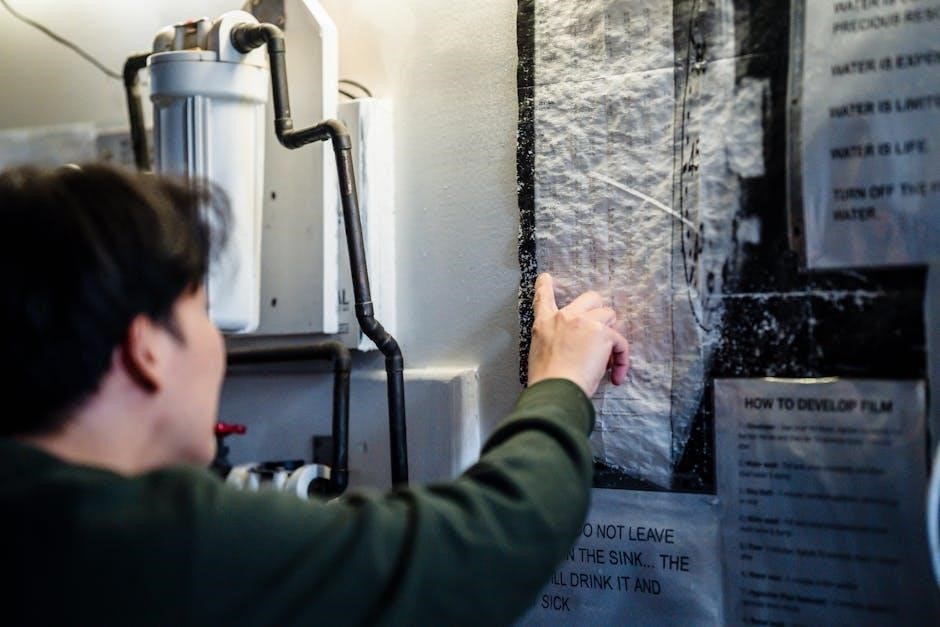Act II Setting and Initial Atmosphere
Act II of “The Crucible” unfolds in the common room of John and Elizabeth Proctor’s home, a setting that initially exudes a sense of domesticity. However, a palpable tension permeates the atmosphere, foreshadowing the turmoil that will soon disrupt their lives.

John and Elizabeth Proctor’s Relationship
The relationship between John and Elizabeth Proctor is strained in Act II, burdened by John’s past infidelity with Abigail Williams. A visible awkwardness and disconnection mark their interactions as they navigate a landscape of mistrust and unspoken resentments.
Tension and Awkwardness
The initial scenes of Act II vividly portray the tension and awkwardness that plague John and Elizabeth’s marriage. Their dialogue is stilted, and their interactions are marked by a palpable distance. The lingering shadow of John’s affair with Abigail hangs heavily between them, creating an atmosphere of unease and unspoken resentment. Even simple gestures and conversations become fraught with underlying meanings, highlighting the deep rift that has formed within their relationship. This strain is a direct consequence of betrayed trust.
Elizabeth’s Distrust and John’s Guilt
Elizabeth’s distrust of John is a central element in Act II, fueled by the knowledge of his infidelity. She struggles to forgive him, and her suspicion lingers, coloring her perception of his actions. John, burdened by guilt and shame, attempts to regain her trust, but his efforts are often met with coldness and skepticism. The weight of his transgression casts a long shadow, poisoning their interactions and hindering any genuine reconciliation. He is stuck between his past and present.
Efforts to Discuss Safe Topics
In an attempt to navigate the fraught landscape of their relationship, John and Elizabeth consciously try to steer clear of contentious subjects. They engage in conversations about mundane matters such as the farm, the crops, and potential purchases like a milk cow. These efforts, however, feel strained and artificial, highlighting the underlying tension that permeates their home. Their attempts at normalcy only serve to underscore the deep rift that exists between them, making genuine connection seem impossible.
The Witch Trials’ Impact on Salem
Act II vividly portrays the escalating chaos in Salem. Fear grips the community as accusations spread rapidly, blurring the line between truth and hysteria. This pervasive atmosphere of suspicion and paranoia deeply affects the lives of the characters.
Spread of Accusations and Fear
In Act II, the accusations of witchcraft begin to spread like wildfire through Salem, fueled by paranoia and personal vendettas. The town descends into a state of fear, as neighbors turn against neighbors, and long-held grudges are settled under the guise of religious piety. This environment of suspicion creates a climate where anyone can be accused, regardless of their innocence, leading to widespread panic and injustice.
Mary Warren’s Involvement in the Court
Mary Warren’s involvement in the court intensifies the hysteria in Salem. As a key member of Abigail’s group, she participates in the accusations, wielding her newfound power to condemn others. Her role grants her a sense of importance, but it also exposes her vulnerability. She is easily manipulated by Abigail, who uses Mary’s fear and desire for acceptance to further her own agenda, contributing to the injustice and chaos of the trials.

Reverend Hale’s Visit to the Proctors
Reverend Hale’s arrival at the Proctor’s residence marks a turning point. His presence signals the escalating gravity of the witch trials and introduces an element of external scrutiny into the Proctors’ already strained household.
Purpose of the Visit: Elizabeth’s Accusation
Reverend Hale’s stated reason for visiting the Proctors is to investigate Elizabeth’s name being mentioned in the court proceedings. He approaches the matter delicately, attempting to discern the truth behind the accusations leveled against her. Hale seeks to assess her character and religious piety to determine her potential involvement in witchcraft. His arrival intensifies the Proctors’ anxiety, knowing the precarious nature of the accusations and the court’s unwavering belief in them.
Hale’s Questions and Assessment
Reverend Hale’s questioning of the Proctors is thorough and probing, intended to gauge their religious standing and moral character. He quizzes John on his church attendance and knowledge of the Ten Commandments, while carefully observing Elizabeth’s reactions. Hale’s assessment is not merely based on their answers but also on their demeanor and the overall atmosphere of their home. He seeks inconsistencies or signs of deceit that might indicate a connection to witchcraft, reflecting the prevailing paranoia in Salem.
Elizabeth’s Arrest and Its Significance
Elizabeth’s arrest marks a turning point, demonstrating the escalating hysteria and the abuse of power within the Salem court. It signifies the breakdown of reason and the triumph of manipulation as innocent individuals become victims.
The Accusation by Abigail Williams
Abigail Williams’ accusation of Elizabeth Proctor stems from her desire to eliminate Elizabeth and take her place as John’s wife. Fueled by jealousy and a thirst for power, Abigail manipulates the court, falsely claiming that Elizabeth’s spirit attacked her. This malicious act reveals Abigail’s calculated cruelty and her willingness to exploit the witch trials for personal gain. Her false testimony triggers a series of events that lead to Elizabeth’s arrest and further intensifies the chaos engulfing Salem.
The Symbolism of the Poppet
The poppet, or doll, given to Elizabeth by Mary Warren, serves as a crucial symbol in Act II, representing the insidious nature of deception and the manipulation of evidence. Planted by Abigail, the poppet with a needle stuck in its abdomen becomes irrefutable “proof” of Elizabeth’s witchcraft. It embodies the ease with which innocent actions can be twisted into damning accusations during times of mass hysteria. The poppet highlights the fragility of truth and justice in the face of paranoia and personal vendettas.

Themes Explored in Act II
Act II delves into themes of public versus private, the blurred lines between them fueling the hysteria. Reputation and integrity are tested, while jealousy and revenge drive the escalating accusations within the community.
Public vs. Private Spheres
Act II highlights the increasing intrusion of public matters into the private lives of Salem’s residents. The act transitions from the Proctors’ intimate, strained conversation to the broader issues of the witch trials. This division becomes blurred as accusations made in the public sphere directly impact individuals’ private lives and relationships, highlighting the fragility of personal boundaries in times of mass hysteria.
Reputation and Integrity
The struggle between maintaining a good reputation and upholding personal integrity is a central theme in Act II. John Proctor grapples with the dilemma of exposing his past sin with Abigail to save his wife, highlighting the conflict between societal expectations and moral principles. His internal struggle showcases the importance of integrity in the face of public scrutiny and the devastating consequences of prioritizing reputation over truth.
Jealousy and Revenge
Driven by jealousy and a thirst for revenge, Abigail Williams emerges as a key player in Act II. Her past affair with John Proctor fuels her desire to eliminate Elizabeth, viewing her as an obstacle to her desires. Abigail’s accusations against Elizabeth are motivated by a desire for revenge and a twisted sense of justice. The destructive nature of jealousy and revenge is evident in the escalating events, threatening to consume the innocent.
Key Quotations and Their Analysis
Act II is punctuated by powerful quotations that reveal the characters’ inner conflicts and the play’s central themes. Analyzing these key lines provides deeper insights into the motivations, fears, and moral struggles within the crucible of Salem.
Proctor’s Skepticism of the Trials
Proctor’s skepticism of the witch trials is evident in his dialogue, questioning the validity of the accusations and the court’s proceedings. He expresses doubt about the accusers’ motives, particularly Abigail Williams, and the reliance on spectral evidence. His skepticism highlights the growing absurdity of the trials and the erosion of reason in Salem.
One notable quote reveals his “Oh, it is a black mischief,” expressing his disgust regarding the trials.
Elizabeth’s Understanding of Abigail’s Motives
Elizabeth possesses a clear understanding of Abigail’s motives, recognizing her desire to eliminate Elizabeth and take her place as John’s wife. Elizabeth sees through Abigail’s manipulative behavior, perceiving the accusations as a means to fulfill her personal vendetta. This understanding fuels Elizabeth’s fear and distrust, highlighting the destructive power of jealousy and revenge in Salem.
She understands that, “Abigail aims to kill her and take her place as Johns wife.”
Character Development
Act II showcases significant character development, revealing the internal struggles and evolving perspectives of key figures. John Proctor grapples with his guilt, Elizabeth confronts her fears, and Reverend Hale begins to question the trials’ validity.
John Proctor’s Internal Conflict
John Proctor’s internal conflict intensifies in Act II, fueled by his past affair with Abigail Williams and his wife Elizabeth’s lingering distrust. He wrestles with the moral dilemma of exposing Abigail’s lies, knowing it would reveal his own sin and potentially ruin his reputation. His anger towards himself and the situation further complicates his decisions. Proctor’s struggle highlights the tension between integrity and reputation, forcing him to confront his deepest flaws and make difficult choices that will determine his fate and the fate of others.
Elizabeth Proctor’s Growing Fear
Elizabeth Proctor’s growing fear stems from the escalating witch trials and her understanding of Abigail Williams’s motives. She recognizes that Abigail seeks to replace her as John’s wife, leading to a deep-seated anxiety about her safety. As accusations spread, Elizabeth’s apprehension intensifies, realizing she is a target. Her fear is compounded by John’s hesitation to expose Abigail, leaving her feeling vulnerable and unprotected. The oppressive atmosphere of Salem and the irrational accusations contribute to Elizabeth’s increasing dread, highlighting the vulnerability of individuals in the face of mass hysteria.
Reverend Hale’s Shifting Perspective
Initially arriving in Salem with unwavering confidence in his ability to identify witchcraft, Reverend Hale’s perspective begins to shift as Act II progresses. Witnessing the growing hysteria and the dubious nature of the accusations, he starts to question the validity of the trials. Hale’s discomfort is evident in his interactions with the Proctors, where he seeks evidence rather than relying solely on confessions. This marks the beginning of his internal conflict, as he grapples with the possibility that innocent people are being condemned based on flimsy evidence. The unfolding events challenge his preconceived notions and sow seeds of doubt.

Allusions and Symbolism
Act II employs allusions and symbolism to deepen its thematic resonance. The play alludes to biblical stories, enriching its exploration of morality and justice. Symbolic elements, such as the poppet, underscore the themes of deception and manipulation prevalent in the narrative.
The Allusion to Moses and Abigail’s Status
The play subtly alludes to Moses, drawing parallels between Abigail’s authority in Salem and Moses’s divine leadership. The Red Sea parting symbolizes how the townspeople seemingly “part” for Abigail, granting her a powerful, almost revered status. This allusion highlights the dangerous influence Abigail wields due to the witch trials, as her accusations carry immense weight. Like Moses, Abigail becomes a figure of both awe and fear within the community, a dynamic that underscores the hysteria gripping Salem.
The Significance of Winter in the Proctor Home
John Proctor’s opening line, “It is winter in here yet,” is more than a casual observation; it’s symbolic. Winter represents the emotional coldness and distance that has settled between John and Elizabeth. It reflects the lingering chill of John’s past infidelity with Abigail, which casts a shadow over their relationship. This “winter” is not just a season but a metaphor for the lack of warmth, forgiveness, and trust that plagues the Proctor household, creating a stark and unsettling atmosphere at the beginning of Act II.
